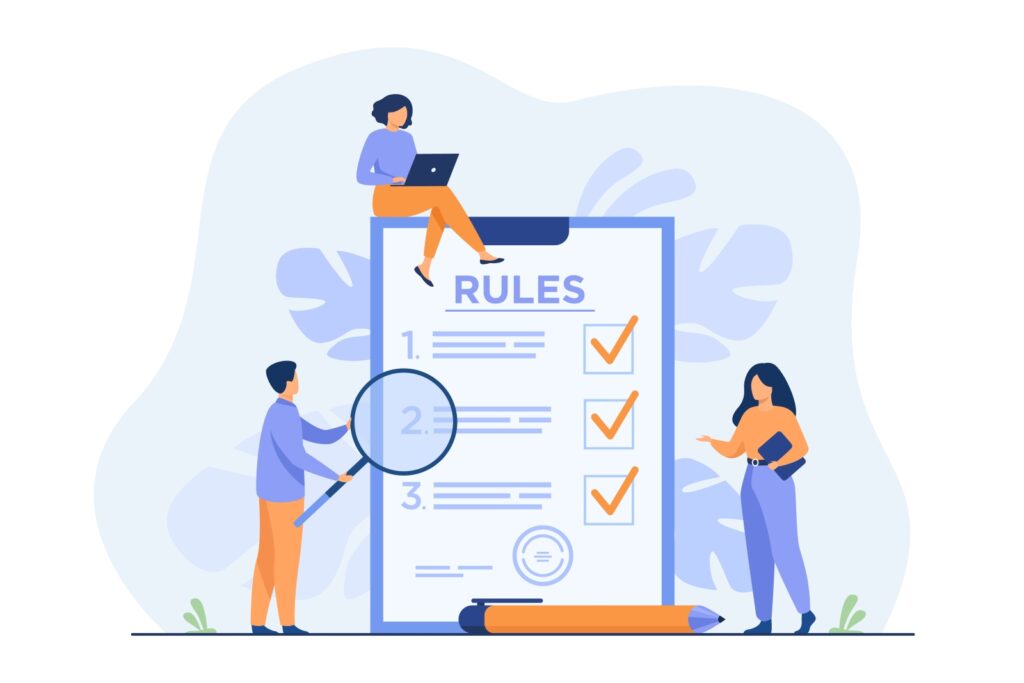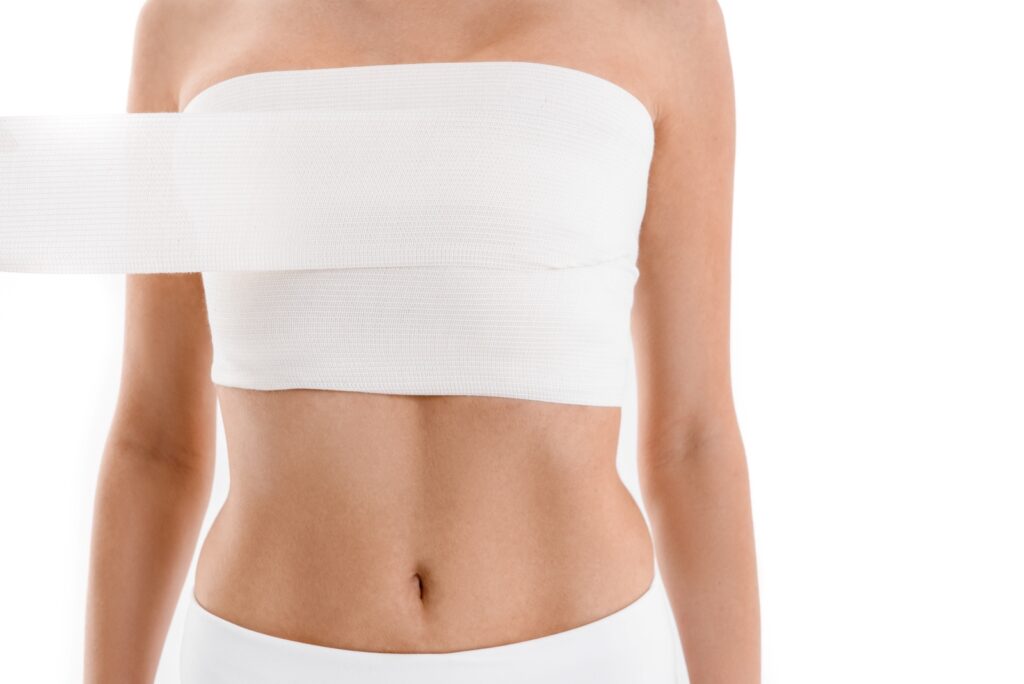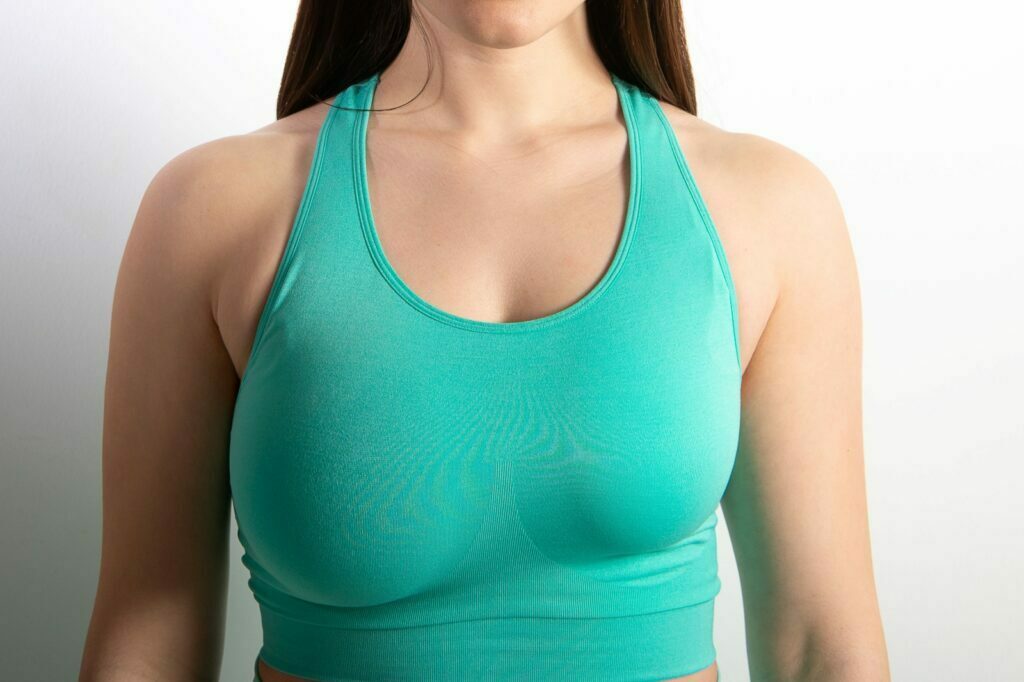Breast reduction is a procedure that reduces the size of breasts and provides a flattering breast shape. After a breast reduction, it is essential to take some downtime and recovery. In this blog, Salameh Plastic Surgery Center will discuss downtime and recovery, as well as what you can expect and what to avoid doing during this time, and the potential for complications. We’ll dig deeper into breast reduction recovery week by week.
Note: The content in this post talks about breast reduction under general anesthesia which takes long time for recovery. If you seek to undergo breast reduction with a lesser downtime, faster recovery (at least a week, you can already go back to work), and lesser pain, you may opt to undergo our awake breast reduction procedure. Here’s a quick link to schedule your FREE Complimentary Consultation. We take pride in pioneering this innovative technique to give our patients more options when it comes to their aesthetics goals.
The procedure involves the removal of skin and breast tissue. Since it doesn’t involve the removal of muscles, it is generally an easy recovery. Patients typically require more than a week off work. To speed up recovery, the patients will be advised to use a special garment we will provide post-surgery or a bra that has no underwire for four to six weeks following the procedure.
The breast reduction procedure is a complex plastic surgery procedure that requires a thorough recovery time. It is essential to follow the directions carefully throughout the healing process to minimize post-operative complications, such as wound infection or even wound breakdown. A few lifestyle adjustments are necessary for a successful and smooth recovery.
Breast Reduction Recovery Week by Week: Recovery Timeline

Dr. Salameh is known as one of the best Kentucky plastic surgery centers for breast reduction. No matter what size it is, whether it’s a 32dd breast, 34c breast, 36c breast, or 36d breast, our surgeons will come up with the best plan for you. Surgeons will remove breast tissue as well as any excess skin and shape the nipples as needed. The breasts are reshaped so that they look more natural.
The recovery process is individual and will depend on the quantity of breast tissue that is removed and whether the procedure is coupled with liposuction. Here’s a general timetable to ensure the best recovery for your breasts that outlines what to expect following the procedure.
Week One
In the first week following the procedure, please concentrate on rest and healing. There may be tenderness or swelling in your breasts right after surgery. There might be some discomfort for a few days through physical activity, which is managed by medication to relieve pain. Keep track of the site of incision post-operative care instructions given to you. Wear compression clothing throughout the day, except in the shower.
Drink plenty of fluids, eat nutritious foods, and stay away from strenuous exercise. Keep to your schedule of medication. Starting in the initial few days following surgery, start taking short, easy walks. Begin at 10 minutes each day, gradually increasing in time to thirty minutes. Let the breasts recover and lower the chance of complications by not smoking cigarettes and vaping.
Week Two
The stitches are removed within 7 to 10 days.. The swelling, pain, and bruising could last for a couple of weeks after surgery. Pain that is stinging following breast reduction, increase in discomfort, or redness around the incision must be reported to your surgeon.
Dissolving stitches are often employed, and any sutures that require trimming are performed at the very first post-op appointment. The scarring appears first because it’s raised and red. It’s hard like cords and can be itchy. With time, the scar will slowly diminish or lighten typically over 12 months.
Week Three to Four
Within the next 2-4 weeks after the procedure, you’ll observe that the swelling is decreasing. It can be helpful to take photos of your recovery process to monitor your swelling and healing process. There is a tendency to scratch at the site of your incision as it starts to heal. It will also become dry but try your best not to scratch it. It is recommended to wear a bra that compresses the area of the surgery. Think about reducing the amount of sodium you consume and drink plenty of fluids, particularly non-carbonated water and other beverages that assist in reducing swelling.
Week Four to Six
The breasts still aren’t fully healed and need to be treated with care. Take care when dealing with them. It is expected that you will feel normal and be able to return to most activities. It is possible to begin feeling the benefits of this procedure such as less neck and back discomfort, clothing fitting better and moving more freely. Continue wearing the compression bra as well as comfortable clothing.
After Six Weeks
It can take up to six months for the incisions to fully heal and to observe the outcomes that the surgery has brought about. It will be a while before you feel fully healed, but your body will be healing. You might be able to return to a more intense training routine and wear any clothes you like.
Breast Reduction Recovery Week by Week: Do’s and Don’ts

The recovery timeline is drawing towards an end, and you’re now eager to get back to living with your new breasts. You’ve made the first steps toward recovery, but does that mean that your active lifestyle is able to return immediately? Salameh Plastic Surgery Center will tell and then leave you with the best breast reduction recovery tips.
Do’s:
- Find someone to take you back home following surgery.
- Take your time to rest.
- Take care of your incision
- Wear loose and comfortable clothing
- Wear a support garment
- Keep your salt intake to a minimal amount
- Lay on your back to sleep, maintaining your breasts in a slightly raised a slightly elevated
- Consume nutritious and healthy foods
- Keep hydrated
- Use prescribed medicines on time
Don’ts:
- Sleep on your back
- Smoke or vape
- Drink a lot of alcohol
- Do any extremely challenging exercises
- Lift large objects
- Dress in tight-fitting clothing
- You can wear different kinds of bras
- Do not ignore warning signs of an emergency
Breast Reduction Recovery Week by Week: Tips to Speed Up Recovery

Surgery to reduce breasts could change the lives of many men and women who suffer from discomfort, pain, or other restrictions due to the large amount of tissue in the breasts. A lot of women experience back pain, neck discomfort, or issues with exercise due to their breasts being large or have difficulty finding suitable clothing that fits well. The procedure of breast reduction can transform your life dramatically by alleviating or eliminating pain, as well as increasing confidence and mobility.
The procedure of breast reduction is as extensive as augmentation surgery. Consequently, it’s equally crucial to make the appropriate preparations to recover. Research has shown that those who are prepared for their recovery are more likely to heal quickly and without any complications. They also are more likely to get the highest overall results from their procedure.
Find some assistance
The initial few days following surgery will require help from someone who truly cares for you. Not only will you require transportation to and from the hospital, but you’ll also need someone to assist you until you’re able to do things by yourself. It usually takes between 2-4 days. At first, you’ll find that you’re ‘coming to’ from anesthesia, adjusting to the pain medications, and not able to fully utilize and use your arms.
When you’re not past the initial hump that you experienced after surgery, it’s important to find someone you trust who will help you and care for you. Keep your chest up, and don’t sleep on your stomach for a few weeks
Make Sure You Wear a Suitable Bra
After the breast reduction procedure, the breasts are likely to be wrapped or bandaged in gauze. You could also be given a specially designed compression garment. Your surgeon will instruct you on the length of time to wear the bandages and also the use of any special items. Be sure to keep the compression garment on for the time your surgeon recommends to safeguard your breasts as well as speed up your recuperation.
Following this initial time of recovery, it is possible to switch back to wearing bras. For this, a supportive, soft-cup bra, such as one that sports, is the most suitable option. It can help keep the breasts secure, which reduces swelling and bruising. Most of the time it is recommended to wear your bra when you sleep. Be careful not to wear underwire bras because they can cause irritation to the area of the incision.
Stay Active
Begin to move slowly, then stop when you are experiencing discomfort. Moving can improve blood circulation and will bring oxygen to the site of the wound to speed up healing. Moving will also lower the chance of creating a blood clot.
Make it a habit to walk every day. Begin by walking a bit more than the previous day. Gradually increasing the amount you walk. Walking improves blood flow and prevents constipation and pneumonia. Avoid activities that are strenuous, like bicycle riding or jogging, weight-lifting or aerobic exercise, until your doctor has confirmed that it’s fine. Your physician will advise you when it is time to start stretching exercises and other normal activities.
You Should Take Your Medications
Some have a fear of taking pain medicine however, since the procedure to reduce breasts is invasive, it’s not realistic to assume that you won’t feel discomfort in the weeks following your surgery. Your surgeon will provide you with moderate pain relief. This is to be followed as instructed. Don’t wait until you are in pain before taking the medication. Research has shown that those suffering from pain have a slower rate of healing, so you may simply be prolonging the pain.
You will likely be offered a course of antibiotics that you can carry home. They’re preventative measures to combat infection. To be protected against infections, ensure that you complete the course.
Get Healthy And Nutritious Food
Make your meals in advance. Due to the limitations in your arms, it’ll make it difficult to raise heavy pots or chop food items, as well as cook your meals during the first few days. It is vital to allow yourself enough time to relax and unwind as your body heals after surgery. Making a few nutritious and simple meals in your freezer and fridge will make your recovery from reduction much easier. Simple, fresh, and unprocessed food items that have low sodium content will aid in reducing swelling.
It is tempting to just give in and eat the unhealthy foods we love when we’re feeling down. But it’s crucial to continue eating well during your healing so your body is stocked with all the nutrients it needs to get back to health as fast as it can. A lot of people prepare by cooking and freezing nutritious meals ahead of time, which helps reduce the stress of cooking but also ensures that you receive all the nutrients that you need to be back to your normal routine.
Make Sure You Drink Plenty of Water
Water is the most vital thing we can incorporate into our bodies. It’s crucial in the aftermath of surgical procedures such as the reduction of breasts. At first, water can assist in removing all traces of anesthesia from your body. But, as you recover, it will keep your body from retaining excessive fluid, decrease the risk of constipation, which is common in patients taking medications for pain, and make sure your cells are adequately replenished and able to heal.
Keep Wearing Your Compression Garments
The breasts will be covered in a compression sleeve immediately following your procedure. This will support your breasts, ensuring that wounds don’t get stretched out and heal properly, and will also help reduce inflammation and swelling. While it’s not the most attractive dress on the market, it’s a necessity, and you should not take off the garment until you’ve been granted permission from your surgeon.
Top Plastic Surgeons in Kentucky & Indiana

Our different types of breast surgeries are performed by the world renowned top plastic surgeons.; we assure you that you’re safe! Dr. Bernard Salameh is double-board certified by the ABPS (American Board of Plastic Surgery) and takes your safety and comfort seriously.
The fact that there are two centers located in Kentucky and Indiana allows it to be more accessible for people wanting to undergo procedures like Lipedema, Liposuction, and various breast, body, and face surgeries.
Salameh Plastic Surgery Center has earned an outstanding reputation for excellent work and great consultations that take into account the patient’s needs while guaranteeing their safety. You can view the boob job video or the Salameh plastic surgery reviews on our website.
Takeaway
The most important thing to do following any surgery is to follow the directions that you are given by your surgeon. They’ve got the experience and experience to provide you with the information that can help you have the best recovery possible and what might create complications and affect the outcomes of your procedure.
Additionally, pay attention to what your body may be seeking to communicate as you are recovering from breast reduction surgery. If you’re in need to take a nap, rest, or take a break, do it. If you suspect that something is wrong or you’re concerned about a symptom, consult your doctor to confirm. Take your time and trust your intuition and take good care of yourself.
The best breast reduction surgery in Evansville, Indiana, and Bowling Green, KY locations have plastic surgeons that accept payment plans for our patients from the consultation up to the breast enhancements surgery. We also offer breast reduction with implants or breast reduction with lift and implants, as well as other body-shaping liposuction to enhance the breast and body figure. Our surgeons will give you the best breast implant payment options and an unforgettable experience! We are also plastic surgeons that accept PatientFi and Credit Care.

